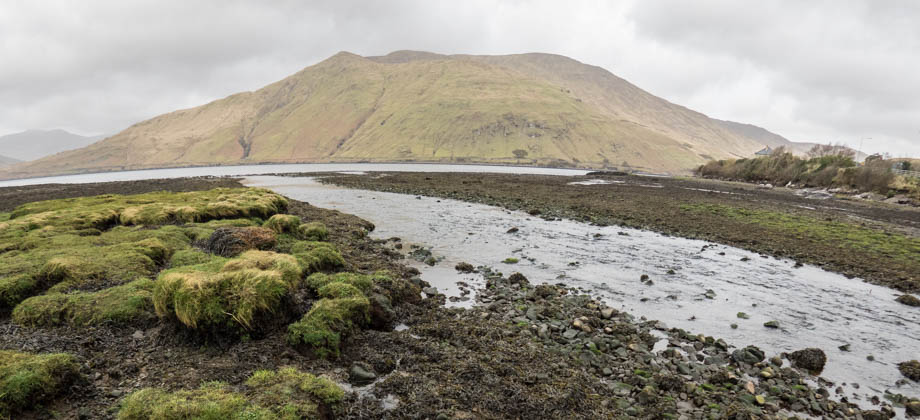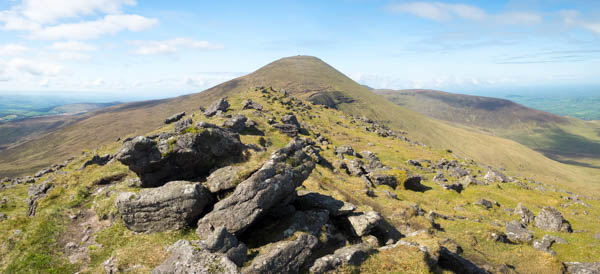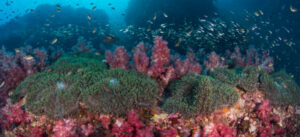Killary Fjord
Colour of Anemones
Dead man's fingers are not the only common anthozoans that you will encounter in Killary Fjord. There are also various species of sea anemones that come in many different forms and a huge variety of dazzling colours. The enchanting jewel anemones (Corynactis viridis) are by far the most striking. Although the meaning of 'viridis' is green, their colonies can also be found in hues of pinkish-purple to various shades of orange and red, with the spherical tips (known as 'acrospheres') of their tentacles in a colour that oftentimes sharply contrasts the rest of the polyp. This can give the impression that the anemone is sparkling, hence the name. My dive buddy, Dan, said it best:
"The colour patterns that these amazing colonies produce across the walls, spread out around the Irish coastline, are truly dramatic and the battles between the different colonies make for the most amazing and dazzling splashes of colour, unique to the geographical location of the dive.


Fluorescent photoproteins are also present within their tissues, which makes the colouration even more spectacular under certain wavelengths of light. These photoproteins absorb both blue (short wavelengths of 400–500nm) and ultra-violet light and then re-emit the light in different fluorescent colours (longer wavelengths of 500–700nm). Fluorescence can sometimes be mistaken for bioluminescence and phosphorescence, but both of these differ in the mechanisms in which the light is emitted. Bioluminescence, for instance, releases light via chemical reactions, whereas phosphorescence is when light is first stored and then subsequently released over time. The video below highlights the orange fluorescence of a jewel anemone whilst feeding. It was shot by Coral Morphologic using a 470nm blue light.
Like the previously mentioned jellyfish and starfish, the name 'jewel anemone' is also a misnomer. Jewel anemones (Corynactis viridis) belong to the order Corallimorpharia, whose members are more closely related to corals that generate hard skeletons, known as stony or hard corals. 'True' sea anemones belong to the order Actiniaria, one of which is the snakelocks anemone (Anemonia viridis). These anemones have long snakelike tentacles that are green in colour, hence the 'viridis' name, and often with purple acrosphere tips. The tissue of their tentacles, like jewel anemones, also fluoresce under ultra-violet and blue light. These tentacles sway and undulate according to the currents and despite being retractable, like the tentacles of the other aforementioned cnidarians, are almost always extended. They also contain zooxanthellae, which are symbiotic algae that provide the anemones with nutrients. Zooxanthellae are photosynthetic organisms, however, which means that snakelocks anemones are usually found in the upper layers of the water column, where sunlight is strongest.

Decapod Symbiosis
One creature that may not immediately be recognised as an anemone is the cloak anemone (Adamsia palliata). When small, this anemone colonises a shell that a hermit crab (Pagurus prideaux) has occupied. Over time, the crab grows and the anemone with it. But instead of switching shells when the original shell becomes too small for the hermit crab, the hermit crab simply allows the cloak anemone to take the shell's place, hence the latter's name. This symbiotic relationship benefits both parties--the hermit crab, when threatened at least, is protected by the anemone with an ejection of long sticky strands (called 'acontia') that contain stinging nematocytes; whilst the anemone benefits both from food scraps, and also uses the hermit crab as a form of locomotion, essentially hitchhiking, if you will.






